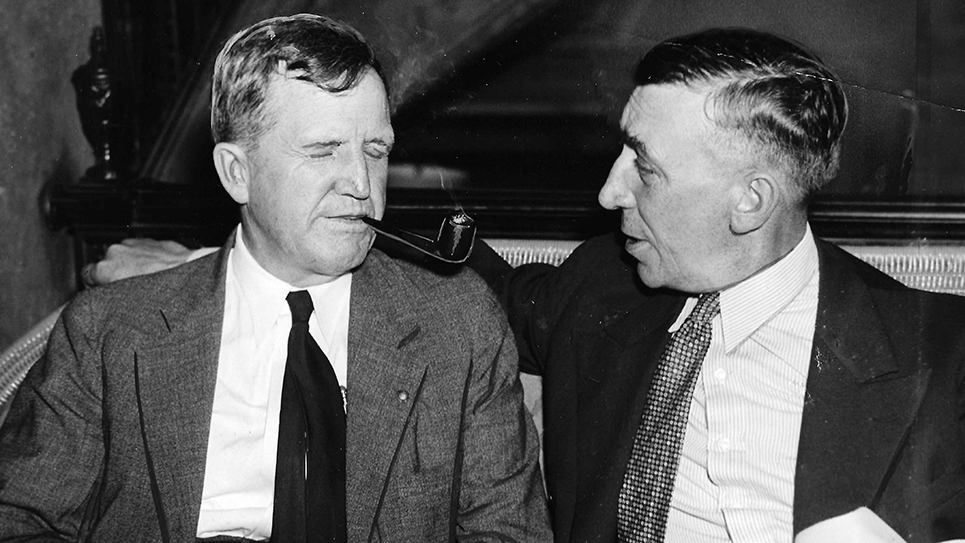Isn’t it time to fire incompetent bank regulators?
By Dr. Harold A. Black
blackh@knoxfocus.com
haroldblackphd.com
The failure of Silicon Valley Bank sparked a mini-panic in financial markets. The word “contagion” was tossed around as if the banking system were replete with other banks in similar straits as SVB. There was even an old-fashioned bank run at SVB and some other banks resulting in the failure of Barney Frank’s Signature Bank. You may recall that Frank was a cosponsor of the Dodd-Frank Act which was supposed to lessen bank failure.
I presume the run was from depositors who held more that the federally insured $250,000 since 94% of SVB’s deposits were over the insured amount. Those depositors would only be able to access $250,000 and would receive a voucher for the rest. Of course, the Biden administration through the FDIC did exactly the wrong thing by insuring all deposits regardless of denomination. This will inspire continued recklessness by some bankers to conduct unsafe and unsound banking practices. Moreover, the bailout was for depositors who likely did not need to be rescued. The SVB episode is a prime example of incompetence at all levels. The banking executives, the California state banking regulator and the Federal Reserve Bank of San Francisco were all complicit and all should be fired.
To recount, SVB was heavily involved in the tech industry, startups and venture capital. It expanded its loan portfolio rapidly taking advantage of the Fed’s low-interest rate policy that started in 2009. That SVB grew so rapidly should have been a warning sign to its regulators. Too rapid growth is a fundamental warning sign and was apparently ignored by the regulators. Another warning sign that the bank was in trouble was its borrowing of $15 billion from the Federal Home Loan Bank system. SVB’s management was incompetent and obviously did not learn its lesson from the S and L failures of the 1980s.
The S&Ls failed because they had short-term liabilities (deposits) and long-term assets (mortgages). When interest rates rose, the cost of their liabilities rose while the return on their assets stayed the same, eventually resulting in insolvency. The same thing happened with SVB. They took their deposits and either loaned them out to tech firms and startups or bought long-term bonds. They then were doubly exposed by the downturn in the tech industry and the Fed’s raising of interest rates. The downturn in tech brought about defaults on SVB’s loans and the rise in interest rates meant that SVB’s bond portfolio lost value. As a result, SVB started borrowing liquidity from the Federal Home Loan Bank system. Surely, the regulators had to have been aware of the borrowing and should have moved to examine the bank. Since SVB was a state-chartered bank, the primary responsibility for examining the bank for safety and soundness lies with California’s Department of Financial Protection and Innovation. The state regulator did not act until it took possession of SVB citing inadequate liquidity and insolvency and turned the bank over to the FDIC to dispose of its assets and pay out insured depositors. That California did not pursue corrective actions sooner is an indictment of that department and its heads should be fired. But of course, they won’t. It is also an indictment of the Federal regulators, namely the FDIC and the Federal Reserve Bank of San Francisco.
To my knowledge, no Federal Reserve president has ever been fired. It is time to change that and for the Fed to fire the president of the San Francisco Fed, Mary Daly. The regional Fed banks have the responsibility for supervising and examining the Fed member banks in their districts and the San Francisco Fed failed to heed the warning signs from SVB and shares the responsibility of this debacle. Mary Daly has long been recognized as one of the least able of all Fed bank presidents. She does not have a background in bank regulation and supervision and has not made these an important part of her tenure at the head of the reserve bank. In fact, she was once a “labor inequity researcher” – whatever that is – at the San Francisco Fed and said that the Marxist economist Gene Wagner “has mentored me my whole life.”
It is time for the Fed to reexamine the role of the regional banks and emphasize safety and soundness. It is also time for the Fed to insist that its regional presidents have training and background in these areas. The stability of the banking system is too important to be left in the hands of amateurs and the incompetent. Both the heads of the California regulator and the Federal Reserve Bank of San Francisco bear responsibility and both should be fired.






